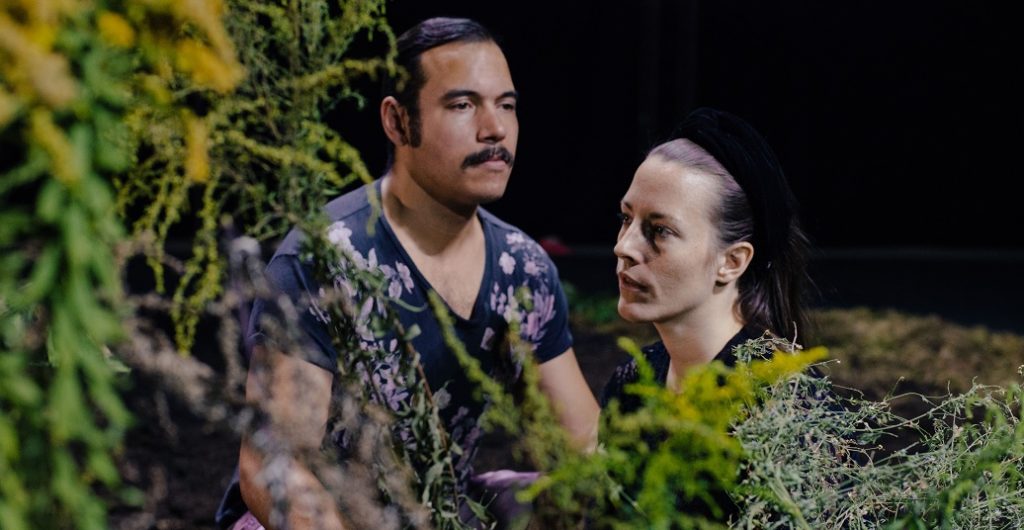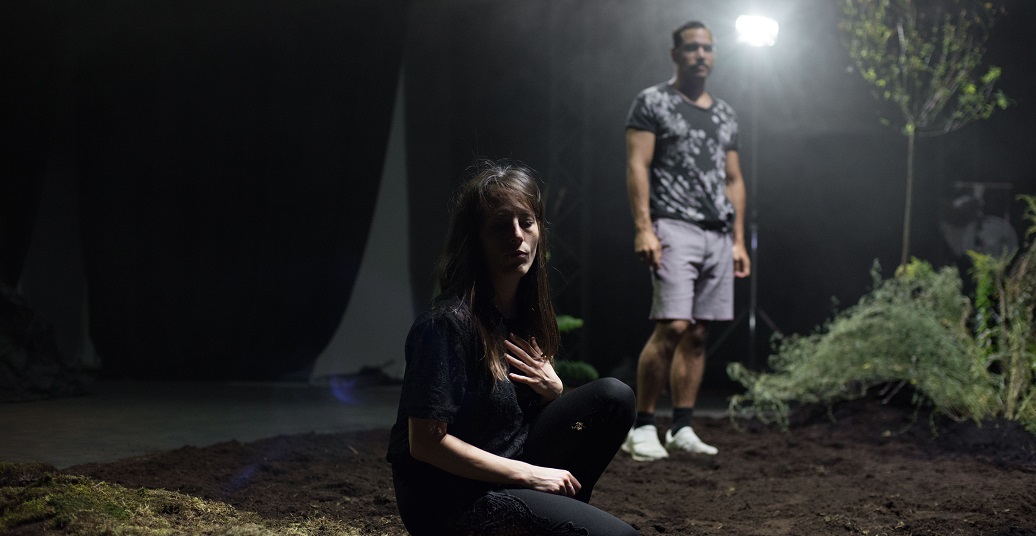In her new solo “Velvet”, with music by Tian Rotteveel, Claire Vivianne Sobottke shape shifts from woman into animal. Immersed in a set composed of soil, plants and self-playing drums, she uncovers the primal forces of female sexuality.
What role do female archetypes play in your work?
I see the female body as a realm in which many things manifest. Countless memories, fantasies, and projections – some horrible, some comical – are stored in the female body. I am interested in embodying archetypes, such as the cave woman, the witch, the half-woman half-animal, as a process of making deeper psychological constructs visible. These constructs include the obsessions and weird ideas I have about my own body. They come from all kinds of different sources but in the end, they form a part of myself.
How is your artistic expression of female sexuality connected with nature?
I see the set-design as a form of constructed nature. Like a garden, it is created by humans, and expresses the desire to be immersed in nature while at the same time being in control of it. Female sexuality, similarly, has always been controlled and tamed by society. There is so much fear surrounding it, and there is so much we, even as women, don’t know. For example, I realised in the process of making this piece that I don’t have free access to my own erotic fantasies as they are so dominated by the things I have been told. For me, the idea of The Wilderness is very important: I see it as an expression of an unknown territory that doesn’t follow human rules and where non-human forces and beings are at play. And this territory may not only be found outside in nature – it is also in the mind.

What did you research when you were making “Velvet”?
I have been fascinated with the condition of ‘hysteria’ for a while now. Historically, women were believed to become ‘hysterical’ as a result of suffering from issues connected to their femininity or were described as having a ‘wandering womb’. Women were often forced into treatment that would supposedly expel these illnesses from their bodies. But hysteria was actually a male invention. In my practice, I seek to reclaim forms of exorcism, which instead of being (such as in the case of hysteria) imposed on women by men, become a positive and empowering process.
Do you feel you become objectified by your audience?
What does it mean to be objectified? I am interested in how I can change the way that people look at me. Do they see me more as a form or an object than as a person? A body that escapes categorisation can be both subject and object, or between those two categories. It can look back and challenge the dynamics of the gaze. What is my part in this game? Do I sometimes enjoy being the object? Whom do I objectify and how do I objectify myself? Perhaps the erotic is not politically correct, or ethical. Of course it can be, but it doesn’t have to be. Sex therapist Esther Perel says ‘the erotic is the antidote to death’. It’s a radical aliveness – it’s being alive without being contained and without compromise.
A Co-operation between Tanzbüro Berlin and Tanz im August 2019
Our tanzschreiber authors Alexandra Hennig, Beatrix Joyce and David Pallant were invited to interview the Tanz im August 2019 artists Nora Chipaumire, deufert&plischke, Nicola Gunn, Gunilla Heilborn and Claire Vivianne Sobottke. All interviews will be published on www.tanzschreiber.de and www.tanzimaugust.de/magazin.




